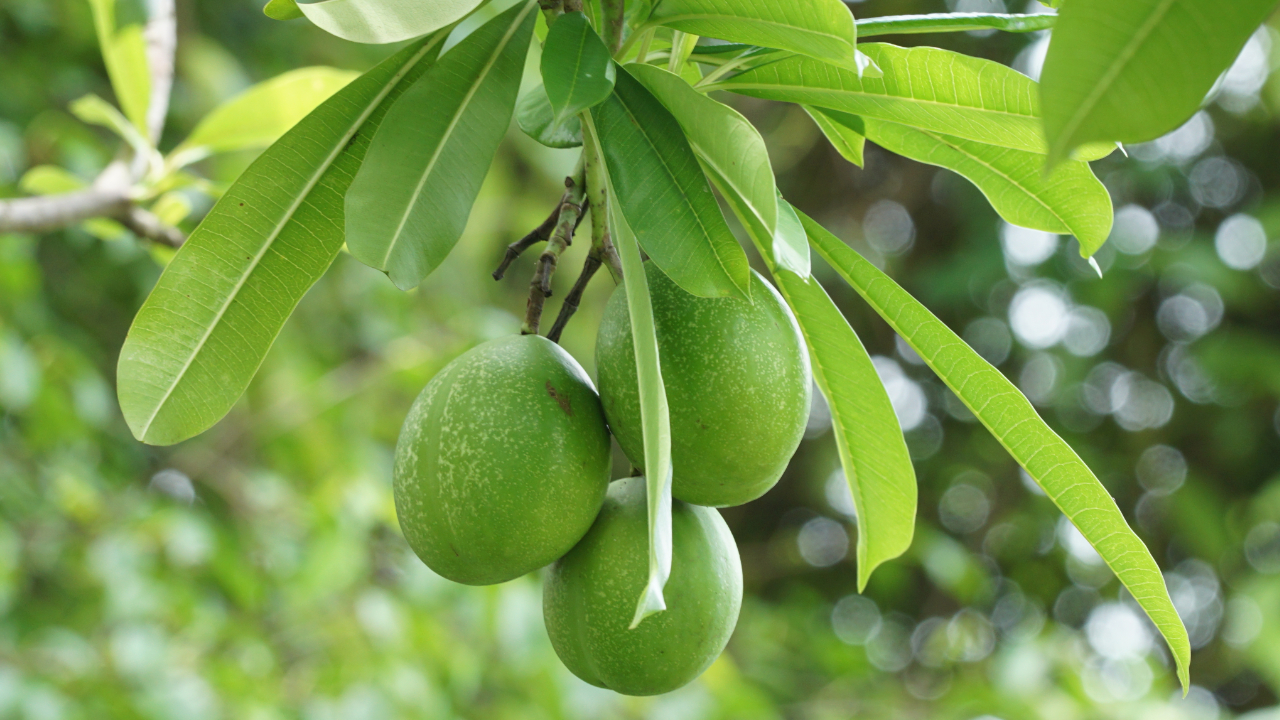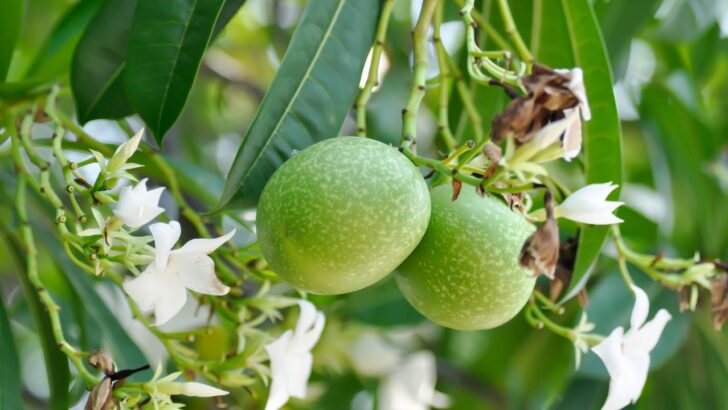Editor’s note: This story is part of our ongoing series on fascinating — and sometimes dangerous — plants from around the world. When we saw The White Lotus shine a spotlight on one of the deadliest fruits on Earth, we knew our readers would want the full story behind it.
Even if you aren’t yet caught up with Season 3 of The White Lotus (seriously, what are you waiting for?), you’ve probably seen the Internet craze over the poisonous seeds that became a major storyline in the April 6 finale. Creator Mike White perfectly sprinkled in references to the deadly Chekhov’s fruit in earlier episodes, stirring up theories that it could have something to do with the show’s murder plot. However, fans weren’t sure of the significance of the fruit until its shocking focus in the season finale.
Warning: Spoilers ahead!
After repeated cautions by the hotel staff that consuming the seeds of the Chekhov’s fruit could have fatal consequences, wealthy entrepreneur Timothy Ratliff (Jason Isaacs), who had already been plotting a murder-suicide of his family after learning of his deep financial ruins, attempted to carry out his plan of mixing the deadly seeds into their cocktails. (We knew there was something fishy about the blender’s constant use throughout the season.) However, the patriarch has a change of heart and doesn’t entirely follow through with his scheme.

Image Credit: HBO.
Despite this, his youngest son, Lochlan (Sam Nivola), whom he initially planned to spare from the killings, got ahold of the leftover contents in the blender, causing him to become seriously ill. Fans were reeling when it seemed like Lochlan had died after passing out on the pool patio, but relief set in once he opened his eyes in his father’s arms.
If you haven’t seen the episode yet, sorry, but we did warn you about the spoilers. But now that we’re all in the know, let’s dive deeper into the toxic fruit and see if it’s really as lethal as the show portrayed.
What makes the Chekhov’s fruit dangerous?

Image Credit: Vengolis, CC BY-SA 4.0/Wiki Commons.
First off, Chekhov’s fruit — also known as Cerbera odollam — isn’t just a dramatic invention for TV. It’s a real, highly toxic plant that poses a serious risk when ingested. In fact, the tree it grows on is commonly called the “suicide tree” due to its deadly reputation. Because of its round shape, the fruit is also nicknamed “ping-pong fruit,” and in some regions, it’s referred to as “othalanga.”
Collider reports that seeds have a bitter taste that can be masked within strongly flavored foods (hence the blended concoction Timothy created). It contains the poison cerberin, which has been linked to hundreds of deaths around the world, particularly in South and Southeast Asia. According to New Scientist, cerberin is a potent heart toxin, similar to digoxin, that “blocks calcium ion channels in heart muscles, which disrupts the heartbeat.”
How many people have died from eating it?

Image Credit: Vengolis, CC BY-SA 3.0/Wiki Commons.
New Scientist also reported that people often use Chekhov’s fruit to commit suicide (more than any other plant). However, it’s unknown how frequently it’s used for murder. Perhaps the most troubling fact is that pathologists can’t identify if someone died from the fruit unless there’s direct evidence that they consumed it. (Clever addition, Mike White. Very clever.)
Timothy wasn’t successful in poisoning his family with the fruit, but there have been many people who’ve died from ingesting it, regardless of the intent. While there isn’t any current research on this, New Scientist reports that there were more than 500 fatalities from cerberin poisoning between 1989 and 1999, just in the southwest Indian state of Kerala. They also noted that the number could be significantly higher, but, as we mentioned, poisonings aren’t easy to identify.
Where do they typically grow?
Chekhov’s fruit typically grows in Southeast Asia, specifically near areas like Sri Lanka and India. Season 3 of The White Lotus takes place in Thailand, which is also a prominent spot for Cerbera odollam trees. The National Parks website states that the tree grows up to 12 meters tall and contains bushy green foliage. So, it’s beautiful to look at, but don’t even think about eating the fruit.
Could You Mistake It for Something Else?

Image Credit: Shutterstock.
There aren’t many plants that can be confused with Cerbera odollam. However, oleander, which is also very toxic, has the closest similarities, as per WebMD. Oleander is usually a tad shorter, but even just touching the plant could cause skin irritation. Meanwhile, ingesting the fruit of a Cerbera odollam tree could cause a slowed heart rate, nausea, and vomiting.
What to do if you’ve ingested the poisonous seeds?
Doctors urge anyone who’s consumed Chekhov’s fruit, no matter how small, to immediately seek medical attention, as it could reduce your chances of dying by 12 percent (via WebMD). If we learned anything from The White Lotus and the revenge killing spree that ended Season 3, it’s that Chekhov’s fruit is no joke, and maybe clean the blender before making a protein shake.

